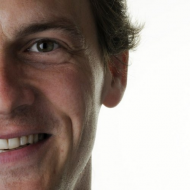I have been experimenting with social media usage in training and I’m quite happy with the results. This blog post explains what results to look for in your own usage of SoMe as a trainer.There are 3 main things to bear in mind:
Traffic (amount of activity) = the level 1 SoMe measure
If you ask training participants to do something via a SoMe platform, it is important to look at the amount and type of traffic you get. This could be compared to Kirkpatrick’s L1 learning measure: reaction.
For example, I have used LinkedIn to create a group of people interested in Leadership. I can see:
- How many people have joined the group
- How many discussions have been created and how many comments have been added
- How many “likes” there have been
- Who is the top user
..on a www.wallwisher.com wall I can see how many posts have been added. On WordPress and YouTube, I can see how many times my blog or video has been viewed. On these latter sites, I can’t always see WHO has done what, but I can often see WHEN.
Content relevance is more about actual learning
Traffic on a site is not in itself a good thing. If all the LinkedIn group members are discussing the Euro-cup football competition, this (probably) isn’t relevant.
On one of my wallwisher pages, I ask leadership training participants to add references, resources, links and comments related to the motivation concept of “FLOW”. In addition to the number of things posted, it is important to take the time to look at the content of what has been posted: Is it “on topic”? Can you see what they have learnt? For example, one post talks about gardening until its dark and not noticing the time fly by – that is FLOW and I can tell that somebody at least understands the concept…
Note: This is about measuring relevance of content, but that doesn’t mean that learning-irrelevant posts are not interesting. Don’t forget the community / group side of all these tools…
The 3rd measure is about continuity of activity
If you can get continuity in your participants’ social media learning activities, you have really achieved something! Continuity is the idea that participants do something with what other participants have posted.
For example:
- Jack posts a reference of a great presentation on YouTube and tweets it with a hashtag –> when Sarah replies to the tweet mentioning something that happened in the 3rd minute of the presentation, you know she has acted on what Jack shared
- Elena posts a discussion on a Yammer group. 2 people comment and 5 others click on “like” –> you can see they have been engaged by Elena’s content
- Matthias shares a reference on a wallwisher page –> Jolien posts another reference writing “Following up on Matthias’ theme, here’s another example of….”
I am convinced that certain uses of social media can bring real value to the learning process. In training, this could be before, during or after the classroom experience. Measure your own efforts and you’ll see for yourself!
Have fun!
D
Visit www.infinitelearning.be
Have a great weekend!

Leave a comment